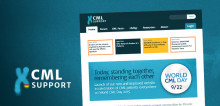Levels of Molecular Response
Until recently the ultimate goal for CML patients treated with TKI therapy was to achieve a ‘PCR negative’ result, also known as a Complete Molecular Response (CMR). However, the use of the word ‘complete’ is now considered to be misleading because it is often interpreted to mean that there has been a total eradication of disease. Recently, international CML experts and clinical groups have agreed to stop using the term CMR replacing it with MR followed by a log reduction number, as in the definition on the next page.

